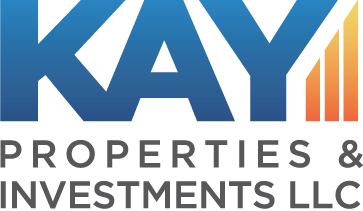By Tommy Olsen, Vice President Kay Properties & Investments
Key Highlights:
- How DSTs help investors successfully complete a 1031 exchange
- Can DSTs potentially provide investors greater diversification?
- How DSTs are utilized to help investors easily replace debt for their 1031 exchange
- DSTs can provide investors a good back-up option for a 1031 exchange
Regardless of what economic trends are taking place, Delaware Statutory Trusts provide investors four timeless benefits for their 1031 Exchanges including deferring capital gains taxes, eliminating the headaches of active management (think the Three T’s: tenants, toilets, and trash), and the ability to create a more diversified* portfolio. Additionally, DSTs have the potential to provide investors potentially consistent and durable income streams with the ability to achieve modest appreciation potential**.
Understanding how to best utilize DSTs for 1031 exchanges can be an important ingredient to maximizing the potential benefits DSTs can potentially provide investors. Here are four specific strategies real estate investors can leverage DSTs for their 1031 exchanges.
Delaware Statutory Trusts can be used by 1031 Exchange Investors in these four ways:
- Debt Replacement
- Cover Strategy
- Diversification and Passive Investing
- Back-Up Option
If you are considering a 1031 Exchange, here are four ways you can use DSTs as a strategic tool for today’s challenging real estate market:
1. Debt Replacement.
One of the most popular uses of DSTs for a 1031 Exchange involves not having to secure financing. For example, if you are in the midst of a 1031 Exchange in today’s unstable debt market, you are likely having a difficult time finding a mortgage to satisfy your 1031 exchange requirements. DSTs, however, are designed to make it easy to invest in without having to deal with qualifying for and taking on a mortgage on own’s own . That’s why many investors find DSTs also make a suitable primary investment option for 1031 Exchanges. Kay Properties has a variety of leveraged DSTs that are pre-structured with non-recourse debt already built-in typically ranging from 30% to 70% offering loan to value (LTV). Because DSTs typically do not require you to have to qualify for a loan or even fill out loan documents, DSTs can create a reliable tool for you to access high-quality real estate investments without having to jump through the hoops of getting approved for a loan.
2. Cover strategy.
Another popular use of DST investments comes in the form of providing a cover strategy for left over equity. Let’s say you sell one property and cannot find a suitable replacement property that uses the full exchange proceeds, and you now have leftover equity you need to place.One of the benefits DSTs can provide you in this situation is the ability to enter one without investing a lot of money.Because DSTs require a low minimum investment amount (typically $100k), they can be a good way for you to use any extra 1031 Exchange proceeds to avoid having a “boot” to pay taxes on. Placing the leftover exchange proceeds into a DST property can potentially allow you to achieve full tax deferral for your 1031 exchange.
An Example of How DSTs Can Provide Cover for a 1031 Exchange
Here’s an example of how DSTs can provide a cover strategy for your 1031 Exchange:
Let’s say you need to replace a $3,000,000 purchase price for a 1031 Exchange, but your real estate broker finds a property for $2,700,000. By investing the leftover $300,000 in a DST, you could successfully avoid the taxable boot. In this way, you could successfully complete your 1031 Exchange by acquiring both a real property investment and a DST investment with an aggregate value of $3,000,000.
3. Diversification* and true passivity.
You have probably heard the expression, “why put all your eggs in one basket?” If you decide to invest in one single tenant net leased property or one multifamily apartment building for your 1031 Exchange, that’s exactly what you could be doing. However, DST properties can potentially allow you to achieve a level of diversification that you would not be able to achieve if you only bought a single NNN asset or multifamily building on your own. By investing in a DST, you have access to a diversified* portfolio of properties that are often high-quality real estate offerings with very large tenants that are professionally managed and potentially provide monthly cash distributions. In addition, you can also achieve a truly passive management structure, eliminating the headaches of the Three T’s: “tenants, toilets, and trash.”
Investing in a single-tenant property, on the other hand, means you are relying heavily on the quality of a sole tenant. If that tenant fails to pay rent or even files bankruptcy, your income could likely be reduced or even completely eliminated. Similarly, would you invest all of your 401k into one company’s stock, even if that company is Amazon or Apple? Your answer is probably No. No matter how great a company is, you probably do not trust it with all of your family’s wealth. In the same way, there is no perfect investment property. You may be able to mitigate your potential exposure to the various risks of real estate by diversifying*. DSTs allow for diversification* amongst a number of different income producing properties. Here is a good example of how to create a potentially diversified* portfolio, along with this article on why creating diversification is important for real estate investors.
4. Back-up option.
One of the many reasons investors should consider DSTs is as a back-up option for their 1031 Exchange. Why is this an important factor to consider? Let’s say that you have successfully sold your investment property and are now proceeding to search for replacement properties that you can manage on your own. In today’s market, you may discover that identifying and closing on high-quality “like-kind” assets within the specified timeframe is not as easy as it sounds. This is when DSTs can be used as a backup option. The reason for this is because DSTs are pre-packaged specifically for 1031 Exchanges, so they can potentially be a very helpful tool to have in the bag in case your primary real property option falls through and you’re facing a failed exchange. In addition, because of the turnkey nature of DSTs, you can often close on them within just 3 -5 days to give you a strategy to successfully complete your 1031 Exchange. Here is a great example of how Kay Properties helped rescue a client’s 1031 Exchange from failure using DSTs. Also, here is another example of how Kay Properties encouraged a client to include at least one DST in his list of potential 1031 exchange eligible properties, and how this strategy provided a good back-up strategy.
DST properties continue to be one of the most popular passive investment option for 1031 Exchanges. Knowing how to best use DSTs to avoid common 1031 Exchange challenges, you will be better situated to potentially complete your exchange and avoid the expensive taxes that could accompany a failed exchange.
Kay Properties team members are always available for in-person meetings, zoom meetings and conference calls with investors to educate and explain various DST options, strategies, and potential benefits and risks.
Look here for access to a complete list of current 1031 eligible exchange DST properties, or use the convenient QR code below and receive your FREE DST 1031 Exchange Toolkit.


